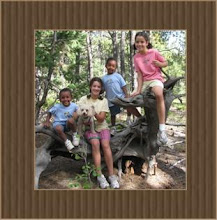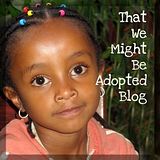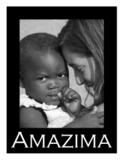There is a ton of information on the Orphan Doctor web site and I would suggest a thorough read of this page before going to any doctor. Maybe even a print out. :) Here.
Scabies:
This helpful tip was given on our adoption agency yahoo group and the author of it gave me permission to post it here. Thanks Jen!I thought I'd post this tidbit for the future travelers in the group. We have
been home for 3 weeks now, and just a few days ago, our live-in nanny developed
a rash that was diagnosed today as Scabies! Loads of fun. After some research
I found out that your child can have Scabies mites and not show symptoms, and
still infect others in your house. The incubation time from initial infestation
to showing symptoms varies from 2 to 6 weeks. We have to treat EVERYONE in the
house on the same night (Permethrin Cream 5%, one time overnight), AND wash
everything -- bedding, clothes, towels, etc. Everything that can't be washed
(stuffed animals, very large blankets) go into plastic bags for 10 days.
Mattresses get put into plastic mattress bags for 10 days as well. If you can
fit stuff in your freezer, it does the same thing as the plastic bags, but only
takes overnight (our jackets are currently in the freezer). We have to repeat
it all a week later if anyone is itchy.
So, my reason for writing this -- treat your child and yourselves BEFORE you
come home! Shimeles never showed signs of Scabies -- no rash, no itching, but
there's nowhere else it could have come from.
I had the cream with us in ET, but didn't use it because I didn't see any
symptoms. Do yourselves a favor and take care of it before you come home. The
treatment is very benign, and usually one application is curative. The laundry,
however, is the gift that keeps on giving.
End message from my yahoo group.
Use HOT water in every load. Use the washing machine as the laundry hamper for your child and do not wash anything else with his clothes and sheets. Change often. Shower often.The medication you use is called Permethrin cream 5% and it is a prescription. You put it all over head to foot for a few days and then it is gone. It works great and we used it for spot treatment after treatment as well. We used it in Ethiopia and we had no issues with it once we got home. Highly recommend treating. Take it home with you if you don't use it, just in case. If you don't use it in 6 months you can give it to a traveling family. That is how we got ours.
Ringworm:
(from me) Ringworm looks like a little water filled pimple at first, then a small blister, then it develops into a RING of tiny blisters and grows and festers. It itches. As soon as you notice it use one of two proven products on it. #1 Lotramin Ultra or ring worm cream or #2 TeaTree Oil (pure). This is going to be a repeat thing. Here is a coupon for the Lotramin ring worm cream (different than Lotramin Ultra) . DO NOT use an off brand, it does not work as well. I know we tried several in order to save money and just ended up buying the expensive stuff.Ringworm on the scalp. Ok, let's face it, this is not a big issue American doctors deal with and they pretty much stink at diagnosing it. They look at the scary photos on line and say, "nope, your kid just has dry skin or cradle cap, or dandruff". Well, that is what it looks like on the scalp. Dry patches, or maybe tiny pimples. You might notice this when you shave off your son's hair every once in a while, if you do that. On a daughter it would be less visible. One sure way to tell if your child has ringworm of the scalp is if you keep getting it. We had taken care of scabies and ringworm on our boys and they seemed to be "cured". But, for some mysterious reason us parents kept getting it on our arms and chins. Hmmm. Who's precious little head nestled in those two places frequently? Our boys. I determined that it had to be ringworm by reading in a book we have for missionaries and talking to other adoptive parents and reading the subtle indicators that only some sites give. I tried Lotramin Ultra on it. I tried fungal powder on it. I tried tea tree oil on it. Nothing worked. After the boys had been home about 11 months and still had it, i basically told the dr that we HAD to have some cure. They did a lab test on the hair roots and much to the surprise of the Dr. yes it was ringworm. They took the meds (oral antifungal, such as Grifulvin (Griseofulvin) or Loprox) and, well, that was the end of that! So, no side effects and it worked. Ringworm is a fungus and it lives in the system, not just on the skin. So a child who has had it a long time will not be all that successfully treated by topical meds, because it has become systemic. So, the oral med really gets it out of the system. Suggested just for tough cases.I will say it was really expensive, but worth it.
It is possible that your child may also have a staph/strep infection on the scalp. This is sometimes caused by the fact that the Ringworm has opened the head for infection. Some families Doctors have prescribed
ketaconazole 2% shampoo for daily use as well as econazole nitrate cream in addition to the griseofulvin oral meds. Also, due to the starts of secondary infections, bactraban cream, may be prescribed to prevent the spread of staph/bacteria. Apparently some really good tests need to be made. Perhaps an adoption clinic or specialist would be able to diagnose this condition.
Good information Web MD on Ringworm more on Web MD.
For pets here
Drug info for people, for pets
It is recommended to use Selsen Blue shampoo or other anti fungal body products at the same time. It is also a good idea to find anti fungal products for the house and laundry.
Two good sites describing Ring worm of the scalp in African American children, very helpful! Skin of Color and Skin Care .
Molluscum:
This is a round, fleshy, flesh lump of skin that appears on the face or body. It is water filled and is acutally a harmless fungus. If it bursts it could so be sure to keep it clean. Tea Tree Oil has been used to dry it out by some parents. It goes away on it's own. A mom on one of the forums I am on used Terracil on her kids and it went away in weeks rather than month. You might look that one up and see what you think of it. Skin irritations:
Our boys get patchy dry skin and sometimes what we call "chicken skin" tight bumpy dry skin on their chest, tummy and back. They also get little tiny bumps on their faces and necks. FOR US this is relieved by giving them lactose free milk, soy milk or rice milk. They seem to be fine with yogurt, ice cream, cheese, etc. in limited amounts. We were told that this is just dry skin, but it goes away with out the Lactose milk. So, i think it is more than dry skin. Worth a try. Giardia:
Even though it is not a skin related issue, I am going to add Giardia here because we had to deal with this for over a year. That seems egregious to me and I hope none of you have to deal with it that long. It did not transfer to any other members of the family, and for that I am grateful. We were extra careful. I do understand that it is somewhat normal, so don't fret too much if you too are doing way too many samples and meds and getting NO results. After several rounds of multiple meds (some I learned later were not even for Giardia) we switched doctors and got a script for 45 ml tinidazole 250 mg/5cc suspension meds. This is usually used successfully for resistant cases. It worked great. The giardia can become resistant when left untreated which is the case for many Ethiopian kids who come home with it. So, if you have not yet tried that, see if it could work out. We had to have it formulated at a compounding pharmacy and it is a bit more pricey, but hey, it works, and that is less than all the treatments we used before that did not work all combined. So, for other things and more info on any of these: go check out the Orphan Doctor web site. It is really informative. Here. You can also check Web MD for specific information and also Drugs.com for info on the medications listed here. Of course none of this is medical advice and you should see a Pediatrician or medical doctor for treatment and diagnosis. Or your vet if your child has transferred any of this to your pets - pretty common!











































No comments:
Post a Comment
Please leave a comment: